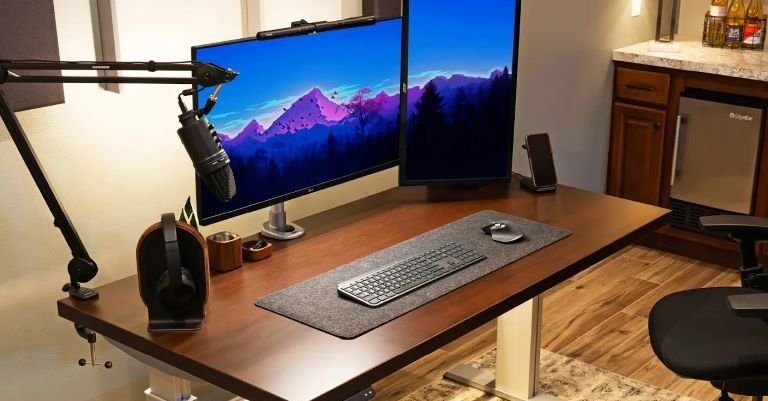If you’re someone who uses the same computer for both work and fun, you’ve probably noticed how easily the two can start to blur together. One minute you’re writing emails, the next you’ve got music playing and a dozen tabs open—half work, half play. It’s easy for your desktop to turn into a mess.
That’s why it helps to actually think about how your desktop is laid out. A little structure goes a long way, especially if you like to mix in casual gaming during breaks. Platforms like High Roller are great when you want to chill without diving into anything too serious, but bouncing between that and work apps can get messy without a system in place.
Cut the Clutter
First thing’s first—clear the junk. If you’ve got shortcuts and random files scattered across your desktop, it’s going to slow you down. Put your work stuff in folders, get rid of old files you never use, and pin your most-used apps to the taskbar so you’re not hunting for them every time.
Some people also use tools like TaskbarX to center their taskbar icons, just to make things look cleaner. It’s one of those little things that makes your whole setup feel more intentional.
Split It Up with Virtual Desktops
Windows has this great feature a lot of people forget about: virtual desktops. Basically, you can have one desktop for work stuff—like your browser, Zoom, spreadsheets—and a totally separate one for games, videos, or whatever else you do when you’re off the clock.
It sounds small, but it’s a game changer. You’re not constantly minimizing and rearranging windows. You just switch desktops, and boom—you’re in a different headspace.
Switch to Dark Mode (Seriously)
If you’re staring at a screen all day, dark mode is your friend. It reduces eye strain, makes colors pop, and honestly just looks cooler. Plus, it works well whether you’re on a video call or spinning a few reels during a quick break.
To turn it on, head to Settings > Personalization > Colors. Set your app mode to “Dark” and you’re good to go.
Use Hotkeys to Save Time
You don’t need to be a power user to benefit from hotkeys. Even setting up a few basic ones—like opening your calendar, launching a browser, or snapping windows side-by-side—can make things feel smoother.
If you want to get fancy, you can try something like AutoHotKey, which lets you script your own shortcuts. But honestly, even just learning a few built-in ones helps a lot.
Widgets That Actually Help
Widgets can be more than just weather and news. Use them to keep tabs on your schedule, system performance, or anything else you glance at during the day. Set them up on one side of the screen so they’re out of the way but still easy to find.
Pair that with some taskbar customization—again, TaskbarX is solid for this—and you’ve got a desktop that looks neat without being boring.
For deeper insight into interface personalization, Microsoft Design offers useful ideas on how design impacts productivity.
One Folder for Fun Stuff
Here’s a super easy fix: make a folder (or pinned menu) just for your games and entertainment apps. That way, they’re not in your face when you’re working, but they’re ready to go when it’s break time.
It keeps you from constantly seeing that game launcher and thinking, “Maybe just five minutes…” You’ll thank yourself later.
Build in Breaks the Right Way
Taking breaks isn’t just about stepping away from your desk. It’s about resetting your brain. That’s where short, low-effort games come in handy. Something like High Roller is perfect—it’s fun, but it doesn’t take long to jump in and out of. That makes it easy to enjoy a quick session without totally losing momentum.
You can even use Windows’ Focus Sessions to set timers for work and breaks. Work for 45 minutes, play for 10—it’s a solid rhythm once you get used to it.
Change Your Background with Your Day
This one’s more about psychology than productivity. If your desktop wallpaper shifts throughout the day—say, a calming image in the morning and something more vibrant in the evening—it can actually help you mentally “clock out.”
There are apps that let you schedule this automatically, or you can swap them manually if that’s more your style. Either way, it’s a nice touch that gives your setup some personality.
At the end of the day, it’s all about making your computer work for you—not the other way around. Whether you’re writing up reports or kicking back with a few spins on your favorite game, a better desktop layout makes everything feel smoother, more organized, and just… easier.

